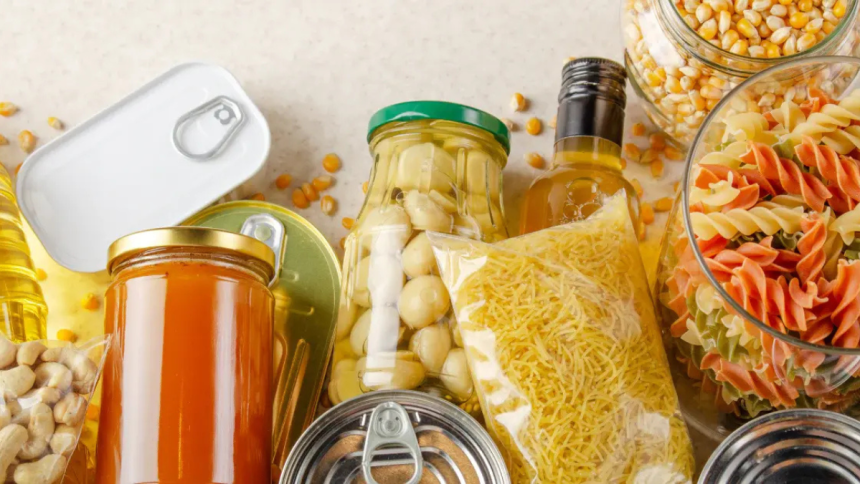When stocking up the pantry, most of us reach for non-perishable items with the comforting thought that they’ll last indefinitely. Canned beans, pasta, rice, and dried fruits are staples in many Australian households, offering convenience, affordability, and a sense of preparedness. But how long do non-perishable foods really last? The answer is not as simple as “forever.” Their shelf life depends on the type of food, storage conditions, and even the quality of food packaging services used to preserve them.
This article explores the realities of non-perishable food longevity, common misconceptions, and practical tips to make the most of your pantry staples.
What Makes Food “Non-Perishable”?
Non-perishable foods are items that don’t spoil quickly and can remain safe to eat for long periods, often months or even years, without refrigeration. They are typically preserved through processes such as canning, dehydration, freeze-drying, or vacuum-sealing.
Examples include:
- Canned vegetables, soups, and meats
- Rice, pasta, and grains
- Dried beans and lentils
- Powdered milk
- Peanut butter
- Honey
- Instant coffee and tea
Expiry Dates vs. Best-Before Dates
One of the most confusing aspects of non-perishables is the labelling. In Australia, you’ll usually see either an expiry date or a best-before date.
Expiry date: Indicates the last day the food is considered safe to consume. It is commonly found on items like baby formula or supplements.
Best-before date: Suggests when the food is at its peak quality. After this date, it may lose flavour, texture, or nutritional value but often remains safe to eat.
Average Shelf Lives of Common Non-Perishable Foods
Canned Goods
Canned vegetables and fruits: 1–2 years beyond the best-before date.
Canned meats and fish: 2–5 years if stored properly.
Canned soups and stews: Typically up to 3 years.
Dry Goods
Rice: White rice can last 4–5 years, while brown rice only lasts 6–12 months due to its higher oil content.
Pasta: Around 2 years when kept dry and sealed.
Flour: White flour lasts up to 12 months; wholemeal flour spoils quicker due to natural oils.
Legumes and Pulses
Dried beans and lentils: 1–2 years, though they may take longer to cook as they age.
Other Staples
Peanut butter: Up to 1 year unopened; 3–4 months once opened.
Honey: Virtually indefinite shelf life thanks to its natural antibacterial properties.
Powdered milk: 1–2 years when sealed and stored in a cool place.
Factors That Affect Shelf Life
The longevity of non-perishable foods isn’t just about the calendar—it’s influenced by several external factors:
Packaging
The quality of packaging is crucial – airtight seals, moisture barriers, and proper labelling all extend shelf life. Innovations in food packaging services ensure foods stay fresher for longer by reducing exposure to oxygen, light, and pests.
Storage Conditions
Cool, dry, and dark places are best. Heat, humidity, and sunlight can accelerate spoilage, even for canned or sealed foods.
Handling
Once a package is opened, its shelf life decreases dramatically. Transferring dry goods into airtight containers can help slow down this process.
Food Type
High-fat foods spoil faster due to oil rancidity, while low-moisture foods last far longer.
Signs That Non-Perishable Foods Have Gone Bad
Even the most reliable pantry staple can eventually spoil. Warning signs include:
- Bulging or dented cans
- Rust or leakage
- Strange odour or colour changes
- Clumping in powders
- Unusual taste suggesting rancidity
Tips to Maximise Shelf Life
Extending the life of your non-perishables comes down to smart storage and organisation:
- Rotate stock using the “first in, first out” method
- Store in airtight containers
- Control humidity
- Label everything clearly
- Buy wisely and avoid overstocking
Longest Lasting Non-Perishable Foods
Some pantry staples stand out for their incredible longevity when stored properly:
- Honey – thousands of years old samples have been found still edible
- White rice – up to 30 years in ideal storage conditions
- Salt and sugar – indefinite shelf life when kept dry
- Powdered drink mixes – often last several years unopened
Why Shelf Life Matters
Understanding the true longevity of non-perishable foods helps households reduce waste and save money. It also plays a vital role in emergency preparedness and food security. On a larger scale, businesses rely on accurate shelf life estimates and professional packaging to minimise waste and meet safety standards.
Final Thoughts
Non-perishable foods offer a sense of stability in our kitchens, but their shelf life is not unlimited. Most items remain edible well beyond their best-before dates, though flavour and texture may decline. By understanding how long different foods last, recognising signs of spoilage, and storing items properly, you can make the most of your pantry.
From the humble tin of beans to the jar of honey that could last a lifetime, non-perishable foods remain one of the most practical ways to ensure you always have something on hand. Next time you’re stocking up, remember that storage, handling, and reliable food packaging all play a role in how long those pantry essentials will truly last.
Lynn Martelli is an editor at Readability. She received her MFA in Creative Writing from Antioch University and has worked as an editor for over 10 years. Lynn has edited a wide variety of books, including fiction, non-fiction, memoirs, and more. In her free time, Lynn enjoys reading, writing, and spending time with her family and friends.















